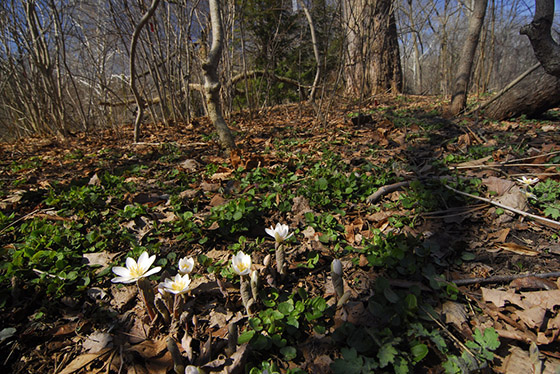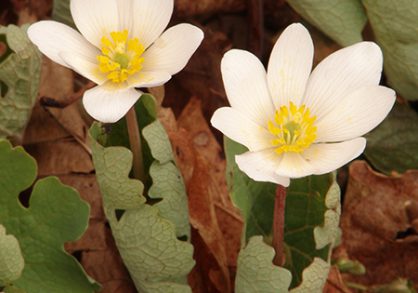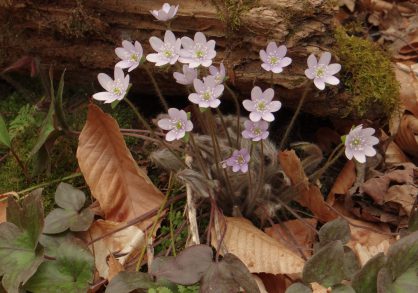
With each flower, stem, and leaf that slowly emerges from its protective bud or cover of earth, spring invites us to pause and mindfully observe the beauty of new growth all around us.
Within Cornell Botanic Gardens’ natural areas, each day brings the appearance of a wildflower from the leaf-littered forest floor. These woodland plants emerge in early spring to bloom and capture sunlight before it is blocked by the growth of leaves on trees overhead.
Beginning with the mysterious flower of skunk cabbage, which melts its snow cover in late winter, followed by the delicate blooms of hepatica, bloodroot, and many others in succession, now is the time to witness the emergence of these delicate blooms.
Each plant’s specialized qualities contribute to the vitality of its habitat and have long provided sources of food, medicine, and other human uses. We invite you to explore a sample of native spring wildflowers on our website. Click on each plant to discover their unique importance.
Whether you are able to enjoy spring wildflowers at Cornell Botanic Gardens, or explore them from home, we don’t want you to miss out on the magic of spring.
Explore spring wildflowers
Between now and mid June, you can see these spring wildflowers (and many more!) throughout woodlands in our natural areas, but are exceptionally abundant in the Mundy Wildflower Garden.


